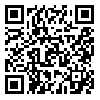BibTeX | RIS | EndNote | Medlars | ProCite | Reference Manager | RefWorks
Send citation to:
URL: http://jdisabilstud.org/article-1-3572-en.html
2- Department of Counseling, Kho.C., Islamic Azad University, Khomeinishahr, Iran
Abstract
Background & Objectives: In today's world, the phenomenon of child abuse is recognized as one of the serious concerns of social, health, and medical systems. In most societies, its various forms, such as physical, sexual, emotional, or neglect, are considered undesirable acts that can be accompanied by legal consequences for the perpetrator. Given that the mother, as the first caregiver of the child, plays a fundamental role in the development and formation of his or her personality, and the early stages of development are the foundation of many psychological characteristics of the individual in the future, it can be said that disruption in this initial relationship plays an important role in the emergence of psychological problems. On the other hand, given the increasing number of children with behavioral issues, one of the effective strategies for reducing these harms is to examine the mental and emotional state of mothers. Therefore, the main purpose of this study was to investigate the lived experience of mothers with a history of childhood abuse.
Methods: The approach and strategy of the present study were qualitative and phenomenological. The study participants included all mothers with a history of childhood abuse with children studying in elementary school in the 2023–2024 academic year in Isfahan City, Iran. After obtaining the necessary permits from the Islamic Azad University, Khomeini Branch, and the Isfahan Department of Education, a list of elementary schools was prepared, and 10 schools were selected. Then, the schools administered the Childhood Trauma Questionnaire (Bernstein et al., 2003) in parent–teacher meetings. Mothers who scored above the cutoff line (12) (mothers who had experienced childhood sexual abuse were excluded due to the deeper effects and complexity of the damage) and who were willing to participate in the study were purposefully selected for interviews. The inclusion criteria included informed consent to participate in the study, diagnosis of childhood maltreatment based on a cutoff score (12 and above) on the Childhood Trauma Questionnaire, minimum high school education, no use of psychiatric medications or psychological treatments during the study, aged between 20 and 45 years, and no experience of childhood sexual abuse. Also, the exclusion criteria were unwillingness to continue cooperating in the research and the presence of corrupted questionnaires. Sampling continued until data saturation, which was 20 people. A semi–structured interview and the Childhood Trauma Questionnaire (Bernstein et al., 2003) were used to collect data. Analysis was performed using Colaizzi's seven–stage coding method using MAXQDA software. Before the start of the research, written consent was obtained from the participants, who were informed about the subject and process of the study. In addition, the volunteers' private and personal information was protected, and interpretation of the results was provided for them if they wished. Also, participation in the present study did not have any financial burden for the participants, and the present study did not conflict with the religious and cultural standards of the subject and the society.
Results: The results showed that the lived experience of mothers with a history of childhood abuse was classified into 5 main themes and 17 subthemes. The main themes included disturbing feelings, problems in relationships with others, problems in relationships with children, negative image of the past, and negative self–image.
Conclusion: In general, chronic anxiety, fear of rejection, depression, and feelings of loneliness in mothers with a history of childhood abuse are a reflection of the emotional wounds of their childhood. As a result, they experience insecurity, worry, and feelings of inadequacy in their relationships.
| Rights and permissions | |
 |
This work is licensed under a Creative Commons Attribution-NonCommercial 4.0 International License. |



